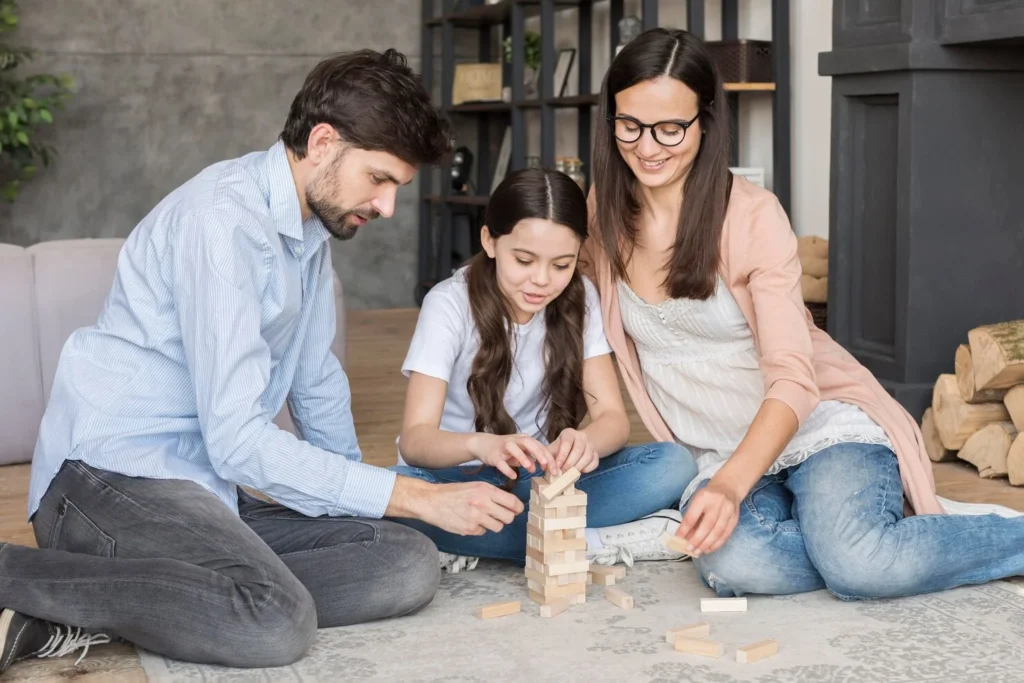Key Takeaways
- The advantages of building a custom home include personalization, energy efficiency, and long-term savings.
- Custom homes provide families with tailored spaces for their unique needs.
- Considerations for custom home building include budget planning and choosing the right location.
Introduction
In the modern housing market, where cookie-cutter designs often dominate, families increasingly seek homes that reflect their unique personalities and needs. This is where custom home building steps in as a preferred choice. By exploring options through New Construction Ohio, families gain insight into the potential of crafting a living space that truly feels like home. Unlike pre-constructed houses, which often require buyers to make compromises, custom homes offer a blank canvas. This allows homeowners to tailor design, layout, and materials to precisely fit their vision and lifestyle, making their house not just a space to live but a sanctuary that echoes their aspirations and dreams.
Ohio has seen a surge in new building due to the state’s expanding economy and rising home demand. The state showcases a blend of modern architectural designs and sustainable building practices, appealing to both developers and homebuyers. Major cities like Columbus and Cleveland are experiencing significant development, transforming neighborhoods and boosting local economies.
Personalization and Customization
One of the most compelling reasons for building a custom home is the degree of personalization it provides. Homeowners have the option to customize every element to their preferences rather than settling for preset features. The options are unlimited, whether it’s designing an open-concept kitchen that’s ideal for entertaining or integrating smart home technologies for convenience and effectiveness. The choice of high-quality materials, customizable layouts, and specific design elements means that every inch of the home serves a specific purpose aligned with the family’s lifestyle. This level of customization ensures that each aspect of the home, from minor finishes to major structural choices, directly reflects the homeowner’s essence and style.
Energy Efficiency and Sustainability
Today’s homeowners are more conscious than ever about their environmental impact, and custom homes are ideally positioned to address these concerns. Custom homes significantly reduce energy consumption and reliance on non-renewable resources by embracing features like advanced insulation, energy-efficient appliances, and solar panels. In addition to helping the environment, investing in sustainability can eventually result in significant financial savings. Furthermore, custom homes can be adapted to incorporate emerging technologies and materials that continuously improve energy efficiency. For additional information on maximizing energy efficiency, refer to the U.S. Department of Energy’s guide on energy-efficient home design.
Cost-Effectiveness in the Long Run
While the initial investment required for a custom home might seem steep, when analyzed over time, the return on investment often proves greater than that of a pre-built alternative. Homeowners ensure minimal maintenance and repair costs in the long run by choosing durable, high-quality construction materials and modern building techniques. Unlike standard homes that may require significant renovations or updates to remain viable, a well-planned custom home retains its value and functionality for years. This financial viability is compounded by potential reductions in utility bills due to energy-efficient design choices, ultimately providing a compelling financial argument for custom home projects.
Designing for Space and Functionality
The ability to create places that precisely suit each family’s particular dynamics is a major benefit of custom homes. Every family operates differently. Whether it’s incorporating a game room for children, a quiet office space for remote work, or a gourmet kitchen for culinary enthusiasts, each room can be purpose-built. Furthermore, as families grow or need change, spaces in a custom home can be adapted or expanded to meet those new requirements comfortably. By foreseeing future needs during the planning stage, families can enjoy a home that effortlessly enhances their daily lives without the need for significant renovations every few years.
Choosing the Right Location
Location plays a critical role in the overall viability and enjoyment of a home. When building a custom home, families can strategically choose a location that meets various lifestyle needs. This includes proximity to work, schools, recreational facilities, and other amenities, contributing to a balanced and convenient life. It’s essential to conduct thorough research regarding the neighborhood and potential development plans, ensuring the area will remain desirable in the long term. Families can choose a setting that complements their values and lifestyle choices by having a better grasp of the community dynamic, which will eventually improve their quality of life.
Working with Architects and Builders
Realizing the dream of a custom home necessitates collaboration with skilled architects and reliable builders. These professionals bring a wealth of knowledge and experience to the table, guiding families through the complex process of translating ideas into livable spaces. Their expertise simplifies decision-making, ensuring that every architectural element is designed with practicality in mind. Communication is key to a successful project; regular meetings and updates keep everyone aligned and help mitigate potential issues before they escalate. Selecting professionals who resonate with the homeowner’s style and values can greatly enhance the home-building experience.
Navigating Zoning Laws and Building Regulations
Constructing a custom home is not without its challenges, including navigating various zoning laws and building regulations. Each locality has unique requirements that must be adhered to, which affects design and construction methods. Acquiring the necessary permits and complying with legal standards are critical steps that can significantly impact timelines and budgets. Homeowners are advised to remain informed and to engage professionals who can adeptly manage these processes. By proactively addressing regulatory needs, families can ensure a smooth construction process without unforeseen interruptions.
Conclusion
The decision to build a custom home embodies more than just a desire for new walls and a fresh roof; it’s an investment in a family’s future, lifestyle, and happiness. While the journey requires careful planning and collaboration, the end result is a home that not only meets current needs but adapts to future aspirations. The long-term benefits of personalization, energy efficiency, and financial viability make a compelling case for custom homes in today’s market. For further insights on sustainable home-building practices, resources like the NRDC provide valuable guidance and information.







